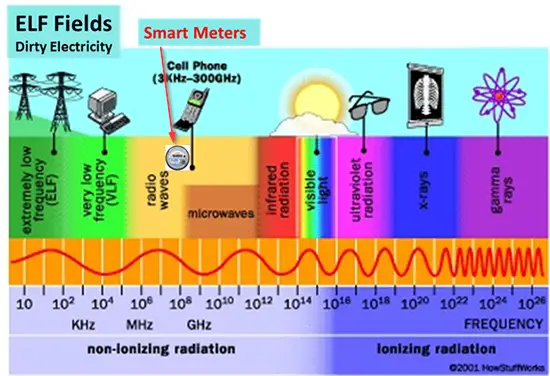The future of coinage refers to the anticipated evolution of physical currency, particularly metallic coins, in the context of advancing technological and economic trends. With the rise of digital payment systems, cryptocurrencies, and cashless transactions, the traditional role of coins in everyday commerce is undergoing a transformative shift. As societies embrace digital currencies and decentralized technologies, there is a growing emphasis on the need for efficient, secure, and sustainable forms of currency. In this future landscape, coins may increasingly adopt smart features, integrating technologies like RFID or NFC for enhanced functionality and traceability. The shift towards environmentally friendly practices may lead to the exploration of innovative materials in coin production to reduce ecological impact. Moreover, the ongoing global trend towards a cashless society raises questions about the continued relevance of physical coins, prompting policymakers and financial institutions to reevaluate their roles in the monetary ecosystem. The future of coinage is intricately tied to broader societal trends, technological advancements, and economic paradigms, reflecting a dynamic interplay between tradition and innovation as we navigate the evolving landscape of currency in the 21st century.
In the annals of human history, the concept of money has undergone a remarkable transformation. From the barter system to the advent of metal coinage, societies have constantly sought efficient mediums of exchange to facilitate trade and economic growth. The latest chapter in this evolution is witnessing a shift towards digital currencies, challenging traditional notions of physical coinage. This article delves into the past, present, and future of coinage, exploring the trajectory that has brought us to the brink of a digital revolution in the world of money.
1. The Ancient Origins of Coinage
To understand the future of coinage, it is crucial to revisit its origins. The first known use of metal coins dates back to around 600 BCE in Lydia, an ancient kingdom in what is now Turkey. These early coins were made of a mixture of gold and silver, introducing a standardized form of currency that greatly facilitated trade. As civilizations grew and interacted, coins became a symbol of economic power and cultural identity, from the denarius of ancient Rome to the gold dinar of the Islamic caliphates.
2. The Rise and Fall of the Gold Standard
The 19th and early 20th centuries witnessed the establishment of the gold standard, linking the value of a country’s currency to a specific amount of gold. This system provided stability but had inherent flaws that ultimately led to its demise. The Great Depression and the economic turmoil of the 20th century prompted nations to abandon the gold standard, ushering in a new era of fiat currencies. The detachment of money from physical commodities marked a pivotal moment in the evolution of coinage.
3. The Digital Revolution
The late 20th century saw the advent of digital money in the form of credit cards, electronic bank transfers, and online payment systems. As technology advanced, the need for physical currency diminished, and people embraced the convenience of digital transactions. However, these systems still relied on traditional banking infrastructure, and the concept of decentralized digital currencies was yet to emerge.
4. Blockchain Technology and Decentralization
At the core of the digital currency revolution lies blockchain technology. The decentralized and transparent nature of blockchain facilitates secure, tamper-resistant transactions without the need for intermediaries. This not only enhances security but also introduces the concept of trustless transactions, paving the way for decentralized finance (DeFi) and smart contracts.
5. Central Bank Digital Currencies (CBDCs)
Governments and central banks are not passive observers in this digital revolution. Many nations are exploring the development of Central Bank Digital Currencies (CBDCs) as a response to the changing financial landscape. The potential benefits, such as increased financial inclusion, reduced transaction costs, and improved monetary policy tools, are driving these initiatives. However, challenges related to privacy, security, and systemic risks need careful consideration.
6. The Birth of Cryptocurrencies
In 2009, the mysterious figure Satoshi Nakamoto introduced Bitcoin, a decentralized digital currency based on blockchain technology. This marked the beginning of the cryptocurrency era, challenging the established financial order. Bitcoin’s success paved the way for a myriad of alternative cryptocurrencies, each with its unique features and use cases. The blockchain, a decentralized and transparent ledger, emerged as a disruptive force, offering security and efficiency in transactions without the need for intermediaries.
7. Challenges and Opportunities in the Digital Age
While cryptocurrencies offer exciting prospects for the future of coinage, they also face significant challenges. Regulatory concerns, price volatility, and security issues have been frequent obstacles. Governments and central banks, wary of losing control over monetary policy, are exploring their own digital currencies. Central Bank Digital Currencies (CBDCs) aim to combine the advantages of digital transactions with the stability and backing of traditional fiat currencies.
8. The Rise of Stablecoins
Stablecoins, a subtype of cryptocurrencies pegged to traditional assets like fiat currencies or commodities, have gained popularity as a middle ground between the volatility of cryptocurrencies and the stability of traditional currencies. These digital assets aim to provide the benefits of blockchain technology without the wild price fluctuations associated with other cryptocurrencies. The emergence of stablecoins is reshaping the landscape of digital currencies and presenting new opportunities for the future of coinage.
9. The Integration of Blockchain in Traditional Finance
Beyond cryptocurrencies, blockchain technology is transforming various sectors, including finance. Decentralized Finance (DeFi) platforms leverage blockchain to offer financial services without traditional intermediaries. Smart contracts, self-executing contracts with the terms of the agreement directly written into code, are at the forefront of this financial revolution. The integration of blockchain in traditional finance could redefine how we perceive and use currency, offering a glimpse into the future of a fully digitized financial ecosystem.
10. NFTs and the Tokenization of Assets
Non-Fungible Tokens (NFTs) have recently taken the world by storm, representing ownership of unique digital assets using blockchain technology. While not a form of currency per se, NFTs showcase the potential for tokenization, wherein real-world assets like real estate, art, or even commodities are represented digitally on the blockchain. This opens up new possibilities for fractional ownership and the creation of diverse, tradable assets in a digital landscape.
11. The Social Implications of Digital Coinage
As we move towards a more digitized monetary system, it is crucial to consider the social implications. Accessibility, financial inclusion, and privacy are central concerns. While digital currencies can potentially bridge gaps in financial access, they also raise questions about surveillance and control. Striking a balance between innovation and ethical considerations will be imperative to ensure that the future of coinage benefits society as a whole.
12. Navigating the Uncharted Waters of Digital Coinage
The future of coinage is undeniably digital, with the ongoing fusion of technology and finance reshaping the way we conceptualize and use money. From the early days of metal coins to the current era of cryptocurrencies, the journey has been marked by innovation, challenges, and paradigm shifts. The path forward involves navigating uncharted waters, addressing regulatory concerns, and finding a harmonious balance between innovation and responsibility. The world stands at the cusp of a transformative era in the history of coinage, where the digital realm holds the promise of a more inclusive, efficient, and interconnected financial future.
Conclusion
The future of coinage appears to be undergoing a transformative shift as digital currencies and technological advancements gain prominence. The traditional concept of physical coins is gradually giving way to digital alternatives, driven by the rise of cryptocurrencies and the growing emphasis on cashless transactions. As blockchain technology continues to evolve, it offers the potential for secure and decentralized forms of currency, challenging the conventional roles of government-issued coins. Central banks are exploring digital currencies, signaling a potential shift toward a cashless society. However, the future of coinage also presents challenges and uncertainties. Issues such as regulatory frameworks, security concerns, and the need for widespread adoption must be addressed to ensure the success of digital currencies. The coexistence of physical and digital coins may persist for some time, as societies adapt to the changing financial landscape. Ultimately, the trajectory of coinage will be shaped by the delicate balance between innovation, regulation, and societal acceptance, influencing the evolution of currency in ways that are both unpredictable and promising.







Leave a Reply